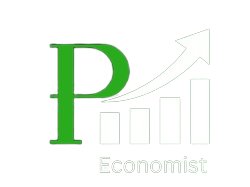Straightening the Twist

26 NOVEMBER 2023
Published in: Pakistan Today
When Pakistan gained its independence, it struggled with a very weak economic base and inadequate infrastructure. Many experts at the time were alarmed by LIFE Magazine’s prescient forecast, published in its January 1948 edition, that Pakistan would collapse within six months as a result of anticipated economic instability. This dismal prognosis resulted from the country inheriting a shattered economic foundation and then facing major challenges in its first forty years of existence. These hardships included the rehabilitation and resettlement of eight million refugees, internal strife, nationalisation of businesses, banks, and educational institutions, and geopolitical entanglements. All of these obstacles caused serious difficulties for Pakistan’s economic development and stability.
Pakistan faced enormous obstacles, but in addition to surviving these economic shocks, it also shocked analysts by ranking among the developing world’s top ten performers and defying expectations of failure. It outperformed many of its peers with an excellent average annual growth rate of 6% between 1950 and 1990. Notably, India suffered with a sluggish growth rate of 3 percent per year throughout this time, known as the “Hindu rate of growth.” India possessed an economy five times bigger than Pakistan’s, and an eight times larger population, but Pakistan’s social indices and per capita income were superior. Pakistan’s commitment to maintaining foreign security was reinforced by its strategic deployment of 6-7% of its GDP each year to building up its nuclear arsenal and bolstering defence capabilities.
Pakistan faced enormous obstacles, but in addition to surviving these economic shocks, it also shocked analysts by ranking among the developing world’s top ten performers and defying expectations of failure.
The dynamics of power and influence have changed in the modern world, as countries are fighting each other more and more for the economy. Strong national economies are now associated with foreign direct investment (FDI), which is essential to bolstering economic power. Pakistan had a decline in foreign direct investment inflows during a period of ongoing political unpredictability and rapidly changing regional conditions that affected the country’s economy. Particularly, during the 11-month period from July 2022 to May 2023, Pakistan recorded FDI of just US$1.3 billion, a significant 21 percent decline from the previous year. This decline was accompanied by declining exports and remittances, underscoring the delicate nature of the economy that is influenced by external factors.
The IPSOS Group, widely recognized as the Institut Public de Sondage d’Opinion Secteur, stands as a prominent multinational market research and consulting firm headquartered in Paris, France. The firm is well-known for releasing a wide range of papers on a monthly and quarterly basis that cover different aspects of the world economy. With a particular emphasis on Pakistan, IPSOS publishes the Consumer Confidence Index Report on a quarterly basis. It is supplemented by a number of other studies that are sent out on a monthly basis. However, claims of exaggeration and factual distortion casting Pakistan’s economic situation in an unnecessarily bad light have sparked controversy surrounding journalist Shahbaz Rana’s recent coverage of the most recent IPSOS Consumer Confidence Index Survey.
When Rana’s story is further examined in comparison to earlier IPSOS polls, a number of disparities become apparent. Rana’s portrayal of a supposedly 60% pessimistic view of the economy ignores a notable improvement from a previous poll in which 70% of respondents reported a negative mood, suggesting a favourable movement in public opinion. Furthermore, the way he portrays anxieties about poverty and unemployment ignores the decreasing proportion of people who view these as major problems. In particular, compared to the previous quarter, unemployment fears dropped from 63% to 57%, poverty worries dropped from 50% to 41%, and the cost of higher taxes dropped from 33% to 15%.
The Ministry of Energy, Power, and Petroleum has refuted Rana’s claim of a startling 480% increase in petrol costs for the poorest households in addition to these purported misrepresentations. In stark contrast to his account, the ministry claims that changes to gas prices were implemented to lessen their effects on 57% of domestic users and guarantee that the gas bills of low-income families will not surpass Rs 900. Moreover, the stabilisation of Pakistanis’ capacity to make significant household expenditures was also neglected in the article, even if there has been a reduction since May 2022.
Above all, the news story conveniently ignores the improvements in several important economic indicators that have occurred throughout the course of the year. Ignoring these developments-such as stronger currency, expanding stock markets, greater LSM, higher crop yields, and the game-changing influence of the Special Investment Facilitation Council (SIFC) – the account comes around as partial and devoid of the larger picture of Pakistan’s economic development and thus raises necessity of careful examination and objective reporting in creating a thorough picture of Pakistan’s economic environment.
Since the beginning of FY – 2024, Pakistan’s economy has demonstrated a noteworthy trend towards recovery, according to the Finance Division GOP’s monthly economic report. While imports increased by 2.1 percent during the same time in FY2024, exports increased by a remarkable 14.2 percent month over month in August. An improvement in the world economy and loosening import restrictions have contributed to this favourable development by reducing interruptions in the raw material supply chain and helping export-oriented sectors in particular. Furthermore, during July and August of FY2024, Foreign Direct Investment (FDI) climbed by 16.1%, mostly due to higher Chinese investments and stable exchange rates. In the agricultural sector, the notable increase of 79.9 percent in cotton arrivals in September 2023 (to 3.93 million bales from 2.19 million bales in the previous year) indicates a deliberate attempt to increase cotton production, with positive implications for exports and overall economic growth.
Pakistan’s economic gains following the implementation of the SIFC highlight the country’s path towards sustainable growth. The multitude of encouraging economic data shows a robust and changing economy, despite ongoing problems. For the purpose of making well-informed decisions, encouraging investor confidence, and promoting a precise knowledge of Pakistan’s economic growth, economic reporting must present a balanced story that takes into account both achievements and problems.





